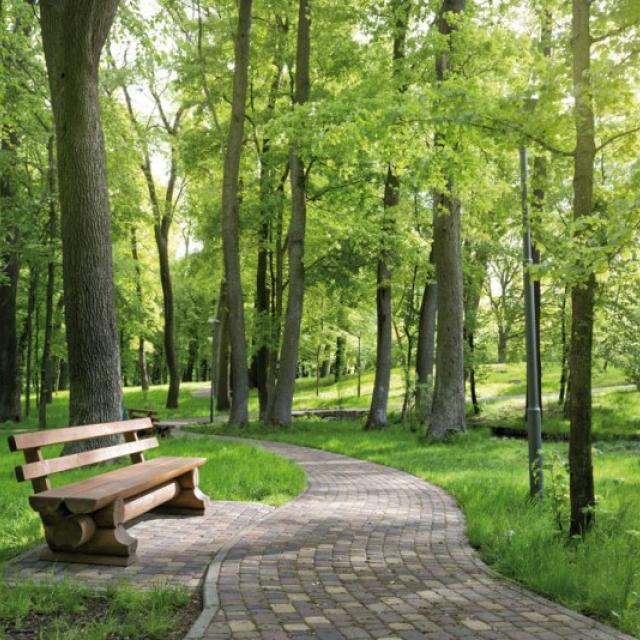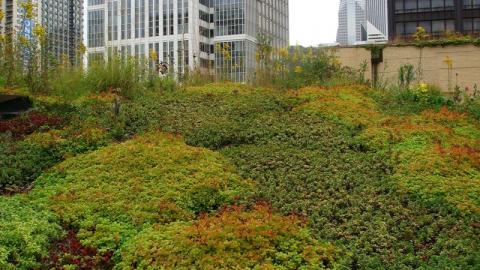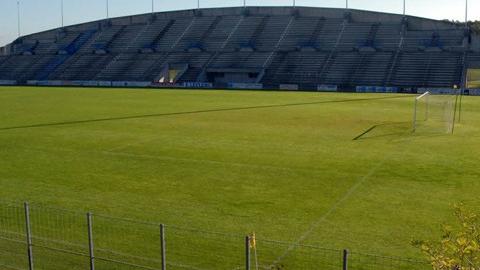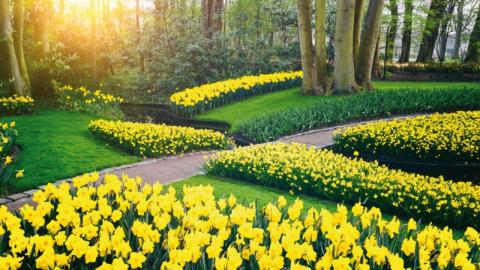In the 1960s, at a time when the demographic growth and the rate of urbanisation was growing globally, architects and town planners began bringing into their urban designs, public gardens and planted leisure areas, which became known as « green spaces ».

A study has been carried out in 31 European countries on the urban green spaces of 386 cities with a population of over 100,000 inhabitants (i.e. covering 170.6 million people and representing 34% of the population of Europe in 2001).
The percentage of green space coverage varies from 1.9% of the urban area (Reggio di Calabria, Italy) to 46% (Ferrol, Spain), based on the definitions used by the authors of the reports (there are different methods that can be used to calculate the figures). On average, the cities of northern Europe have a larger proportion of green spaces than the southern cities.
Forty-five million people living in European cities still only have limited access to urban green spaces, particularly in the cities that only have 2 to 13% of their areas set aside for green spaces.
The number of square metres of green space coverage allocated per capita tends to decline as the population density increases (because of dwellings being built on the existing green spaces). The distribution and geographical location of the green spaces (within the towns centres or in the suburbs) are factors that determine how accessible they are to the public.
The amount of per capita green space coverage varies considerably, depending on the country, city and urban layout. With a few exceptions, the densely-populated cities of the south-east of Europe have very few green spaces, for example, 3 to 4 square metres per capita in Cadiz, Almeria, Fuenlabrada (Spain) and the Calabria region of Italy while the urban centres of north-western Europe have a per capita allocation up to 100 times greater with, for example, 300 m2 per person in Liege (Belgium), Oulu (Finland) or Valenciennes (in France, a country where some twenty or so of its major French cities are well down on the list of European rankings).
At the end of the 20th century, in a study of 67 densely populated towns of the United Kingdom, it was found that the increase in population was not compensated by an equivalent increase in green space, whereas on the continent, the European cities tended not to allow this ratio to drop by creating land reserves (green belts or restored wastelands).
The European Commission has invited the Member-states and European city councils to offer the best solution for providing access to green spaces. For its part, the WHO has also encouraged the cities to reintroduce the concept of urban agriculture, which could be integrated locally into certain green spaces.
In France, according to UNEP (the Landscape Contractors’ Trade Association), 80,000 people are involved this sector of the economy; with 20,000 “landscape” contractors providing a turnover of 5 billion € (750 million € in the Île-de-France region alone).
A survey carried out by UNEP and IPSOS (a company specialising in surveys) determined that 7 out of 10 people in France base their choice of a place to live on the closeness of green spaces to their home. In 2010, more than 90% of those surveyed said that contact with plants, greenery and gardens is important, even essential, in their daily lives. 20% of French people regret the fact that they have no contact with nature and gardens, particularly in the city centres and shopping areas (cited by 86% of the respondents), followed by the work place (65%), leisure areas (63%) and places of residence (50%). If they were elected as local politicians, then 42% of them would give priority to creating parks and gardens and improving the existing green spaces. 31% would even propose entirely plant-orientated urban renovation projects.
The creation or improvement of green spaces is becoming increasingly common within the context of achieving long-term sustainable development, thus providing a service to the inhabitants and locations where these are missing, for social, sanitary and ecological reasons (blue-green urban corridors, ecological networks and green recreational spaces); and perhaps this could be decided either by the local authorities (often the town halls, local and regional councils) or, for environmental or promotional purposes, by real estate promoters. The integration of a biodiversity aspect into the green spaces requires some initial and ongoing training, not only for the designers of these green areas but also for the teams who will maintain, monitor or liven up the green spaces.
There is an increasing tendency to adopt a dual social and ecological role for the green spaces, seeking to harmonise a closeness to nature with a differentiated environmental management policy, the conservation of dead wood and senescent trees, creation of less artificial pathways and bodies of water, abandonment of pesticides, use of local species and varieties that are less horticultural and a greater tolerance of wild and spontaneous flora. Without neglecting the parks traditionally located in the centres of the major cities, it has become necessary to consider the wastelands, common natural areas and green spaces in the suburbs, where the issues relating to biodiversity are equally important.
The significance of being close to nature for health reasons has also been the subject of a number of quantitative and qualitative studies. In France, the French landscape federation and the National Trade Association for Landscape Contractors determined, in 2014, that 5 billion euros in health costs could be saved each year in France if everyone had a view of a green space from his or her home.
At the present time, many people seek to spend some time outdoors after or during moments of intense stress. For example, immediately after the attacks of 11th September 2001, the managers of America’s national parks observed a net increase in the number of visits to the parks; “the people left their homes that day, walking around, reflecting on the events of that day”, commented a park director. A growing number of studies have revealed that this return to nature represents an adaptation strategy that would appear to be very efficient, showing that contact with nature is very beneficial for the health, with the trees and green spaces providing a therapeutic effect for the people visiting these areas, particularly when recovering from stress or fatigue.



